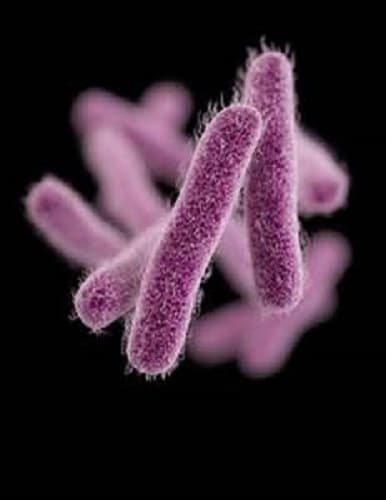
Shigella
Foodservice Shigella Fact Sheet for Restaurants
WHAT IS SHIGELLA?
Shigella are a group of bacteria that can cause shigellosis – a diarrheal illness in humans. The two types of Shigella most commonly associated with human illness in the developed world are Shigella sonnei and Shigella flexneri. In developing parts of the world, Shigella dysenteriae causes deadly epidemics of dysentery.WHAT ARE THE SYMPTOMS?
The infectious dose (amount required to cause illness) is believed to be as low as 10 cells of the Shigella organism, depending on the age and health of the affected individual. Most people infected with Shigella develop diarrhea (often containing blood and mucus), fever and stomach cramps starting a day or two after they are exposed to the bacterium. Symptoms of shigellosis often last for five to seven days. In some people, especially young children and the elderly, the illness can be so severe that the patient needs to be hospitalized. A severe infection with high fever may also be associated with seizures in children less than two years old. Shigella can be shed in the feces of some individuals for three to five weeks after symptoms of illness subside.
HOW IS IT TRANSMITTED?
The primary reservoirs of Shigella are infected humans and higher primates. Food handlers with poor hygiene practices or who do not properly wash their hands before handling food are principal contributors to the spread of shigellosis. The disease can also be spread by eating foods contaminated with Shigella (typically from a fecal source), especially if these foods are stored under improper refrigeration. The type of food most often implicated as the vehicle of foodborne shigellosis is salad, especially those made with potatoes, chicken, tuna or shrimp. In most cases, infected food handlers are responsible for contaminating the foods. Person to person spread of Shigella has caused outbreaks in facilities such as day care centers.HOW IS IT CONTROLLED?
Control of the disease relies on thorough cooking and on adequate separation of raw and cooked products. Good sanitary practices and adequate personal hygiene, including effective hand washing, are also critical. Infected food handlers should not be working with food.
For assistance with this topic or other food safety questions for your operation, please Contact Us.
REFERENCES AND FURTHER INFORMATION
- Centers for Disease Control and Prevention
- University of Florida Fact Sheet
- Food and Drug Administration “Bad Bug Book”


